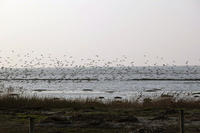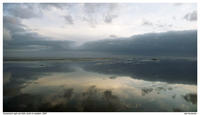You are in: Europe -> Germany -> Wadden Sea, and traditional search or Image Gallery will yield results of this site only
Wadden Sea
| Site number: | 1314 |
|
| Type of site: | Natural | |
| Date: | - | |
| Date of Inscription: | 2009, 2014 | |
| Location: | Europe, Germany, Lower Saxony and Schleswig-Holstein, Denmark, Netherlands | |
Up to 75 images are shown here. Click on each for more details or on Image Gallery for more images.
Six official UN languages:
Arabic,
Chinese,
English,
French,
Russian,
Spanish
Other languages: Breton, Catalan, Croatian, Czech, Danish, Dutch, Dutch Low Saxon, Esperanto, Finnish, Frisian, German, Hungarian, Italian, Japanese, Latvian, Limburgish, Norwegian-bokmål, Norwegian-nynorsk, Polish, Portuguese, Swedish, Ukrainian, Vietnamese
Other languages: Breton, Catalan, Croatian, Czech, Danish, Dutch, Dutch Low Saxon, Esperanto, Finnish, Frisian, German, Hungarian, Italian, Japanese, Latvian, Limburgish, Norwegian-bokmål, Norwegian-nynorsk, Polish, Portuguese, Swedish, Ukrainian, Vietnamese
| Description: | "The Wadden Sea comprises the Dutch Wadden Sea Conservation Area and the German Wadden Sea National Parks of Lower Saxony and Schleswig-Holstein. It is a large temperate, relatively flat coastal wetland environment, formed by the intricate interactions between physical and biological factors that have given rise to a multitude of transitional habitats with tidal channels, sandy shoals, sea-grass meadows, mussel beds, sandbars, mudflats, salt marshes, estuaries, beaches and dunes. The inscribed site represents over 66% of the whole Wadden Sea and is home to numerous plant and animal species, including marine mammals such as the harbour seal, grey seal and harbour porpoise. It is also a breeding and wintering area for up to 12 millions birds per annum and it supports more than 10 percent of 29 species. The site is one of the last remaining natural, large-scale, intertidal ecosystems where natural processes continue to function largely undisturbed." --WHMNet paraphrase from the description at WHC Site, where additional information is available. | |
| This is an 2014 extension of the Dutch and German Wadden Sea site, inscribed on the World Heritage List in 2009. The Wadden Sea is the largest unbroken system of intertidal sand and mud flats in the world. The complete extension now covers most of the Danish Wadden Sea maritime conservation area, as well as a maritime extension of the Dutch Wadden Sea Conservation Area and the German Wadden Sea National Parks of Lower Saxony and Schleswig-Holstein. --From the 2014 description at WHC Site, where additional information is available. | ||
| The Wadden Sea (Dutch: Waddenzee, German: Wattenmeer, Low German:Wattensee, Danish: Vadehavet, West Frisian: Waadsee) is an intertidal zone in the southeastern part of the North Sea. It lies between the coast of northwestern continental Europe and the range of Frisian Islands, forming a shallow body of water with tidal flats and wetlands. It is rich in biological diversity. In 2009, the Dutch and German parts of the Wadden Sea were inscribed on UNESCO's World Heritage List. The Wadden Sea stretches from Den Helder in the Netherlands in the southwest, past the great river estuaries of Germany to its northern boundary at Skallingen north of Esbjerg in Denmark along a total length of some 500 km and a total area of about 10,000 km². The islands in the Wadden Sea are called the Wadden Sea Islands or Frisian Islands, named after the Frisians. However, on the westernmost Dutch island, Texel, the Frisian language has not been spoken for centuries. The Danish Wadden Sea Islands have never been inhabited by Frisians. The outlying German island of Heligoland, although ethnically one of the Frisian Islands, is not situated in the Wadden Sea.Many of the islands have been popular seaside resorts since the 19th century. Mudflat hiking (Dutch: Wadlopen), i.e. walking on the sandy flats at low tide, has become popular in the Wadden Sea. It is also a popular region for pleasure boating.In June of 2009, it was placed on the World Heritage list by Unesco. --Wikipedia. Text is available under the Creative Commons Attribution-ShareAlike License. | ||
| Source: | http://whc.unesco.org/en/list/1314 | |
| Reference: | 1. UNESCO World Heritage Center, Site Page. | |



























